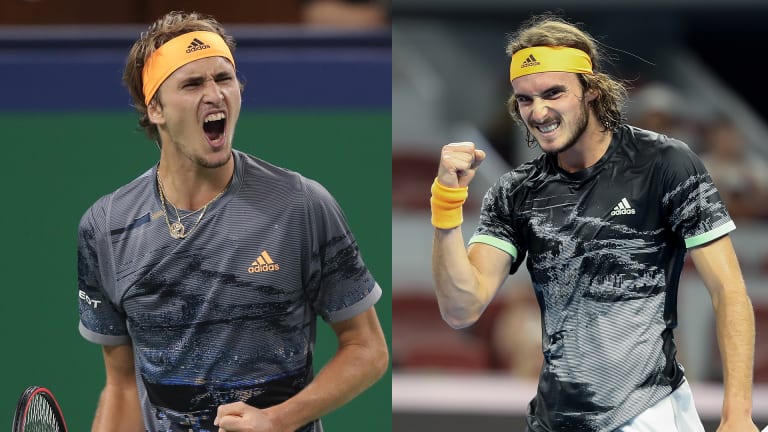ATP Shanghai, China
Shaking Up Shanghai: Zverev and Tsitsipas dismiss Federer and Djokovic
By Oct 11, 2019ATP Shanghai, China
All the feels: Arthur Rinderknech, Valentin Vacherot get tears flowing in emotional Shanghai ceremony
By Oct 12, 2025ATP Shanghai, China
Valentin Vacherot wins Shanghai cousins final to become Monaco's first ATP singles champion
By Oct 12, 2025ATP Shanghai, China
"The dream undreamable": Arthur Rinderknech to face cousin Valentin Vacherot for Shanghai title
By Oct 11, 2025ATP Shanghai, China
Valentin Vacherot ousts Novak Djokovic in Shanghai to become lowest-ranked ATP Masters 1000 finalist
By Oct 11, 2025ATP Shanghai, China
Daniil Medvedev “finds the way again” after toppling Alex de Minaur in Shanghai
By Oct 10, 2025ATP Shanghai, China
Roger Federer thrills tennis world with Shanghai Masters Celebrity doubles return
By Oct 10, 2025ATP Shanghai, China
"I follow my cousin": Arthur Rinderknech joins Valentin Vacherot in Shanghai semifinals
By Oct 10, 2025ATP Shanghai, China
Novak Djokovic holds off Zizou Bergs to reach Shanghai semifinals
By Oct 09, 2025ATP Shanghai, China
Valentin Vacherot stuns Holger Rune to extend Shanghai run, cousin Arthur Rinderknech looks to join qualifier in semis
By Oct 09, 2025Shaking Up Shanghai: Zverev and Tsitsipas dismiss Federer and Djokovic
These were important wins for Tsitsipas and especially Zverev, ones that remind us, and should remind them, of the level of play they’re capable of reaching.
Published Oct 11, 2019
Advertising

Shaking Up Shanghai: Zverev and Tsitsipas dismiss Federer and Djokovic
Advertising
Shaking Up Shanghai: Zverev and Tsitsipas dismiss Federer and Djokovic
Advertising
Shaking Up Shanghai: Zverev and Tsitsipas dismiss Federer and Djokovic
Advertising

Shaking Up Shanghai: Zverev and Tsitsipas dismiss Federer and Djokovic